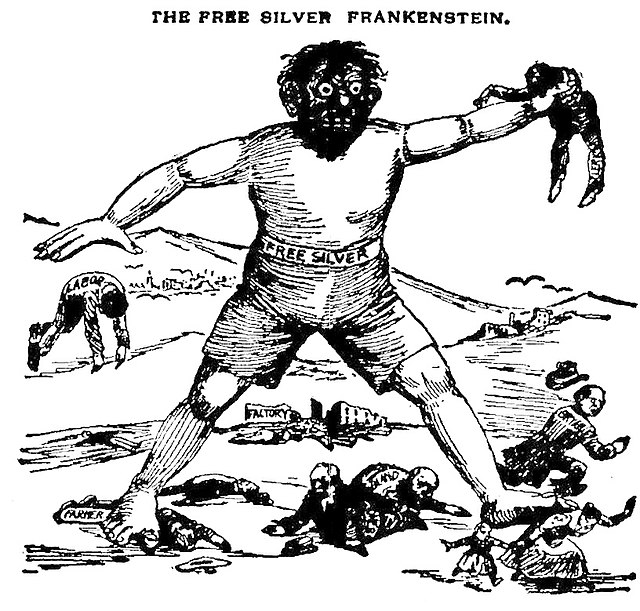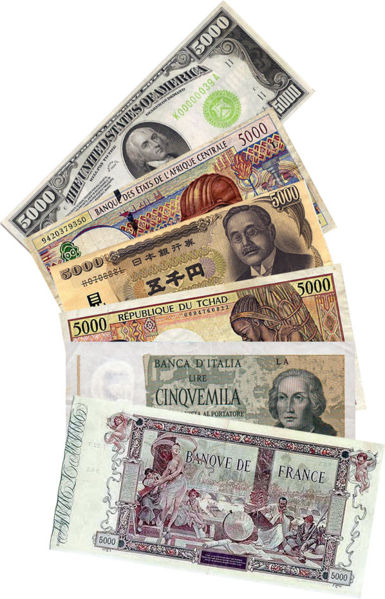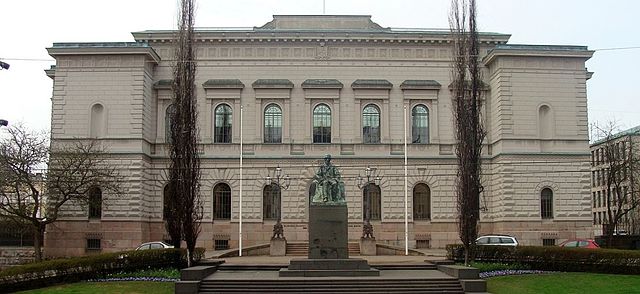Free silver was a major economic policy issue in the United States in the late 19th century. Its advocates were in favor of an expansionary monetary policy featuring the unlimited coinage of silver into money on-demand, as opposed to strict adherence to the more carefully fixed money supply implicit in the gold standard. Free silver became increasingly associated with populism, unions, and the perceived struggle of ordinary Americans against the bankers, monopolists, and robber barons of the Gilded Age. Hence, it became known as the "People's Money".
Republican campaign poster of 1896 attacking free silver
"The free silver highwayman at it again" in 1896
Cartoon from Puck showing a silverite farmer and a Democratic donkey whose wagon has been destroyed by the locomotive of sound money
1896 editorial cartoon equating the free silver movement with Frankenstein's monster.
Monetary policy is the policy adopted by the monetary authority of a nation to affect monetary and other financial conditions to accomplish broader objectives like high employment and price stability. Further purposes of a monetary policy may be to contribute to economic stability or to maintain predictable exchange rates with other currencies. Today most central banks in developed countries conduct their monetary policy within an inflation targeting framework, whereas the monetary policies of most developing countries' central banks target some kind of a fixed exchange rate system. A third monetary policy strategy, targeting the money supply, was widely followed during the 1980s, but has diminished in popularity since that, though it is still the official strategy in a number of emerging economies.
Banknotes with a face value of 5000 in different currencies. (United States dollar, Central African CFA franc, Japanese yen, Italian lira, and French franc)
Reproduction of a Song dynasty note, possibly a Jiaozi, redeemable for 770 mò.
The Bank of Finland, in Helsinki, established in 1812.
The headquarters of the Bank for International Settlements, in Basel (Switzerland).








